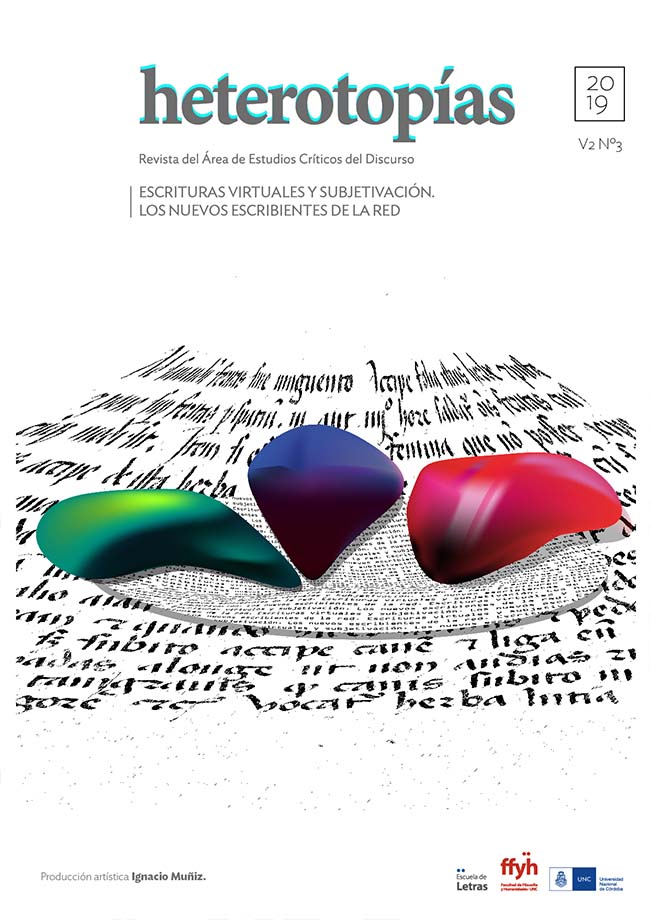Chained: una pesadilla victoriana: ¿treinta minutos en el futuro?
Contenido principal del artículo
Resumen
George P. Landow
Fundador, editor en jefe y webmaster
Profesor emérito de Inglés e Historia del Arte, Universidad de Brown [george@victorianweb.org]
El presente texto es una traducción realizada por la Dra. Isaura Sánchez, docente de la Universidad Autónoma de México. Dicha traducción inicia con la pregunta“¿Por qué treinta minutos en el futuro?” Porque la experiencia de ver –no, experimentar–, la más reciente adaptación de Christmas Carol de Dickens removió los recuerdos de Max Headroom, la vieja serie de televisión de ciencia ficción cuyo subtítulo o lema era “Veinte minutos en el futuro”…
Downloads
Detalles del artículo
Número
Sección
- Usted es libre de:
Compartir — copiar y redistribuir el material en cualquier medio o formato
Adaptar — remezclar, transformar y construir a partir del material
- Bajo los siguientes términos:
Atribución — Usted debe dar crédito de manera adecuada, brindar un enlace a la licencia, e indicar si se han realizado cambios. Puede hacerlo en cualquier forma razonable, pero no de forma tal que sugiera que usted o su uso tienen el apoyo de la licenciante.
NoComercial — Usted no puede hacer uso del material con propósitos comerciales.
CompartirIgual — Si remezcla, transforma o crea a partir del material, debe distribuir su contribución bajo la lamisma licencia del original.
Cómo citar
Referencias
Aarseth, E. (1997) Cybertext: Perspectives on Ergodic Literature. Baltimore: Johns Hopkins University Press.
Benedikt, Michael, ed. (1991) Cyberspace: First Steps. Cambridge: MIT Press.
Berger, P. y Luckmann T. (1966) The Social Construction of Reality: A Treatise in the Sociology of Knowledge. Garden City, N.Y.: Doubleday.
Bolter, J. y Grushin R. (2001) Remediation. Cambridge: MIT Press.
De Certeau, M. (1984) The Practice of Everyday Life. Trans. Steven Rendall. Berkeley: University of California Press.
Earnshaw, R. A., Gigante M. A., y Jones H., eds.(1993) Virtual Reality Systems. London: Academic Press.
Gelertner, D. (1992) Mirror Worlds; or the Day Software Puts the Universe in a Shoebox/... How it Will Happen and What it Will Mean. New York: Oxford University Press.
Hayles, N. K. (1999) How We Became Posthuman: Virtual Bodies in Cybernetics, Literature, and Informatics. Chicago: University of Chicago Press.
Heim, M. (1993) The Metaphysics of Virtual Reality. New York: Oxford.
Henderson, J.V., Pruett, R.K., Galper, A.R., Copes W.S.(1986) “Interactive Videodisc to TeachCombat Trauma Life Support.” Journal of Medical Systems 10 (Junio): 271-76.
Ijsselsteijn, W. (2002) Elements of a multi-level theory of presence: phenomenology, mental processing and mental coordinates. Proceedings of PRESENCE 2002. Universidade Fernando Pessoa. Porto, Portugal. 9-11 October 2002. [Accessed by Seegert 15 August 2008]
Jones, L., Karloski J.L., y Smith, S.G. (1987) A General Chemistry Learning Center: Using the Interactive Videodisc. Academic Computing 2 (Septiembre): 36-37, 54.
Miles, A. “Softvideography: Digital Video as Postliterate Practice” in Digital Tools and Cultural Contexts: Assessing the Implications of New Media. Ed. Brian Hawk, James A. Inman, and Ollie Oviedo. [Pre-publication PDF copy]
Rose, A. (2009). “New York Vérité (Sort of).” City Section, New York Times 3 April 2009. [Online version]
Ruskin, J. (1903). The woks of John Ruskin. Ed. E. T. Cook and Alexander Wedderburn. Library edition. 39 vols. London: Allen and Unwin, 1903-1912.
Ryan, M. (2001). Narrative as Virtual Reality. Baltimore: Johns Hopkins University Press.
Seegert, A. (2009) ’Doing there’ vs. ‘Being there’: Performing Presence in Interactive Fiction. Journal of Gaming and Virtual Worlds 1.1: 23-37.
Wexelblat, A. (1993). Virtual Reality: Applications and Explorations. Boston: Academic Publishers Professional.
